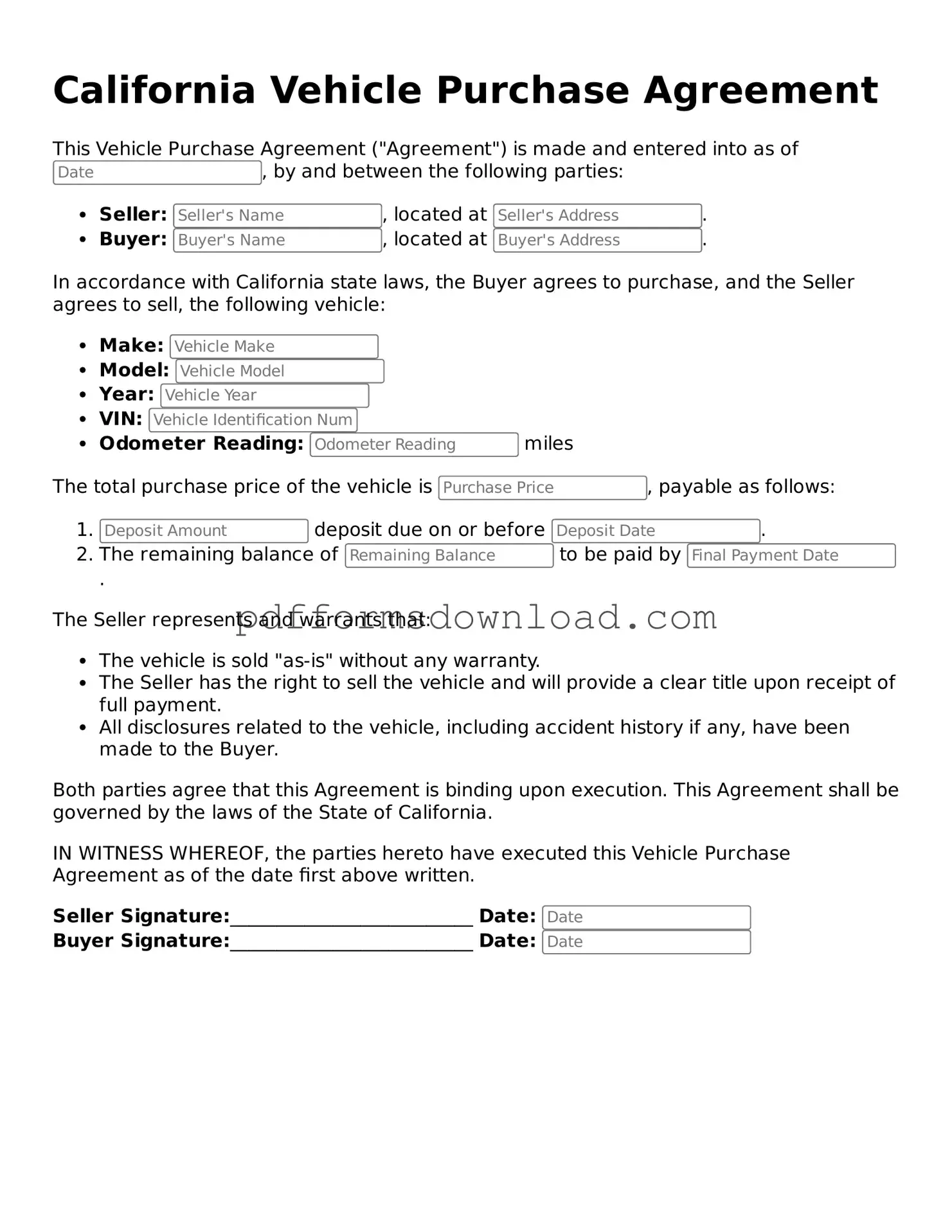What is a California Vehicle Purchase Agreement?
The California Vehicle Purchase Agreement is a legal document that outlines the terms and conditions of a vehicle sale between a buyer and a seller. This agreement typically includes details such as the vehicle's make, model, year, Vehicle Identification Number (VIN), purchase price, and payment terms. It serves to protect both parties by clearly stating their rights and responsibilities throughout the transaction.
Why is a Vehicle Purchase Agreement important?
A Vehicle Purchase Agreement is crucial for several reasons. First, it provides a written record of the sale, which can be useful in case of disputes or misunderstandings. Second, it helps ensure that both the buyer and seller are on the same page regarding the terms of the sale. Lastly, having a signed agreement can facilitate the transfer of ownership and registration with the Department of Motor Vehicles (DMV).
Do I need to have the Vehicle Purchase Agreement notarized?
In California, it is not a legal requirement to have a Vehicle Purchase Agreement notarized. However, having it notarized can add an extra layer of authenticity and may be beneficial if either party wants to ensure that the document is legally binding. Notarization can also be helpful if there are any disputes in the future, as it provides proof of the identities of the parties involved and the date of signing.
Can I cancel a Vehicle Purchase Agreement once it is signed?
Once a Vehicle Purchase Agreement is signed, it is generally considered binding. However, certain circumstances may allow for cancellation. For example, if the buyer discovers that the vehicle has undisclosed defects or if the seller fails to meet the terms outlined in the agreement, the buyer may have grounds to cancel. It's essential to review the agreement carefully and consult with a legal professional if you believe you need to cancel.
